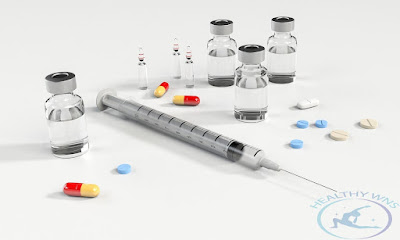Why don't diabetic cuts heal quickly?

|
| Diabetic Cuts |
Normal wounds take about two weeks to fully heal, but this is not the case for diabetics. wounds tend to heal diabetics more slowly.
During which the wound passes with inflammation or pus if it is not cleaned constantly - even if the wound is very simple!
Why is wound healing in diabetic patients slow?
Having diabetes does not necessarily mean that wounds will not heal easily, as certain factors increase the probability of a person experiencing healing problems.

|
| Diabetic Patients |
The most prominent of these factors are:
High Blood Sugar - NHS
If you have diabetes, your body is unable to successfully regulate your blood glucose (also known as blood sugar) on its own.
If your blood sugar levels are consistently high, it can lead to problems with your circulation, nerves, and immune system — all of which can hinder good wound healing.
Poor Circulation
If you have poor circulation, it may take longer for the wounds to heal. This is because it is difficult for blood to reach the site of the wound to fight infection and bacterial infections and aid in the rebuilding process.
One cause of poor circulation is a thickening of the blood due to high glucose levels, which makes it more difficult for the heart to push blood up to the soles of your feet.
Neurodegenerative Diabetes
People with diabetes sometimes have neuropathy, a condition that affects the nerves and can lead to a loss of sensation in a part of your body.
Diabetic neuropathy results from persistently higher than normal blood sugar levels and is more common in the hands and feet.
This condition is common - about 60% of diabetics have it - and can have a serious impact on wound healing.
The big problem is that if you have diabetic neuropathy, you may not realise you have a cut, blister, ingrown toenail, etc.
because you can't feel it, which increases the possibility of infection and turns into a more serious wound.
Weak Immune System
Some medical conditions can affect how your immune system works. If you have diabetes, your immune system may not be able to control skin and wound infections.
High blood sugar can change the chemistry of the blood in ways that lower the body's defences and make the immune system work slower.
High blood sugar affects the immune system in the following ways:
- Weakening the body's defences: Excess sugars in the blood break down into a compound called dicarbonyl, which weakens the body's defences.
- Decreased innate immunity: High blood sugar leads to a medical condition called glycation, which occurs when a sugar molecule attaches to a protein molecule without the help of an enzyme. When this happens, parts of your blood don't work as they should, which reduces your body's natural immunity.
- Delayed healing: When blood is thick and blood sugar is high, white blood cells take longer to reach the site of the wound and fight infection, which delays the healing process.
- Stronger Bacteria: High blood sugar levels can make bacteria stronger, so it's hard for a weak immune system to fight bacteria.
What would happen if a diabetic's wound was left untreated?
With care and attention, wounds tend to heal more quickly. But when you live with diabetes, everyday wounds are more likely to become serious when they last for a long time.
Neglecting to treat wounds can lead to:
Foot Ulcers or Wounds
If left untreated, foot wounds can turn into ulcers, resulting in diabetic foot injuries often called diabetic foot ulcers.
Gangrene
Gangrene occurs when body tissues die - fortunately, this condition is not uncommon. But it is something to watch out for, as it can cause serious problems if not detected and treated early.
Gangrene begins with an infected wound and spreads over time. If the infection remains untreated for a long time, the surrounding tissues can begin to die
Read also: ⇒ 5 Best Breakfast Foods For Diabetics
Tips to help a diabetic wound heal faster
Wounds First Aid
If wounds or ulcers are treated and disinfected immediately, this will help them heal and heal faster. Wounds should be sought and treated immediately.
The diabetic leg swelling should be checked, And note whether there is a diabetic foot wound. For people with neuropathy, finding new wounds can be difficult.
Therefore, a diabetic should examine his extremities well and examine between the fingers in particular, Is there a diabetic foot wound, ulcer on the heel of the foot, or necrotic foot ulcer.
Wearing white socks can also help. If you see a red spot or a place where your sock sticks to your skin, check your foot to see if you have a new wound.
Keep the wound clean and covered with appropriate dressings
When wounds are clean and moist, they heal better. So it is important to clean and cover them immediately. If you have a new scratch or wound, you should apply a basic bandage and antibiotic cream well.
But if you have wounds that are infected, slow-healing, or more serious, make an appointment with your doctor to learn the best wound care for you.

